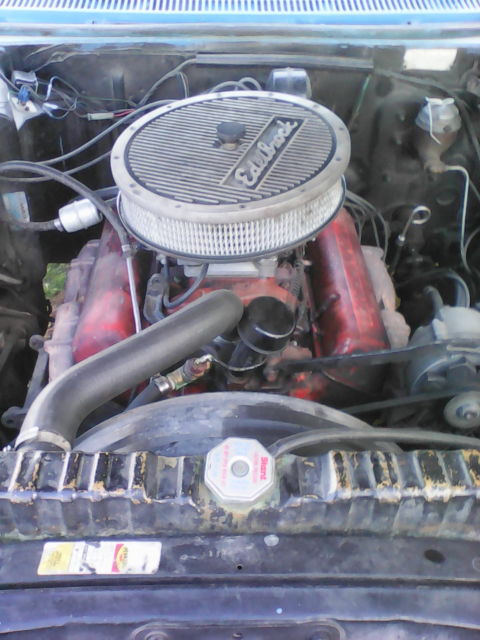

These are the details that few people pay attention to and yet they are critically important. This is an excessive amount that will also make bolting the intake manifold on problematic and it’s almost guaranteed that the intake gasket will not seal properly because the angle has changed. So to reduce a 64cc chamber down to 58cc, this is 8cc which means you need to remove 0.048-inch from the head deck surface. Adding better pistons is the one way to go because the rule of thumb is you have to mill the head 0.006-inch to remove 1cc of chamber volume. You can still add a set of larger port heads to these engines but you will either need to add domed pistons to improve the compression or mill the heads. These engines make very little torque, but decent horsepower for their size. That little engine used an Edelbrock Performer camshaft (204/214 degrees at 0.050 with 0.420/0.443-inch lift) and Edelbrock dual plane intake manifold with a tuned-up Q-jet and it really ran good with a Muncie four-speed and 3.31:1 rear gears. I attribute the better mph to better horsepower mainly from the added compression. At the drag strip, the car picked up about 4 mph and a couple of tenths of a second. I’ve never done a straight comparison on the dyno, but I have removed a set of 462 heads from a 287 (0.030-over 283) and installed a set of 520 Power Pak castings that were lightly ported and increased the intake valve size from its tiny 1.72-inch diameter to a 1.84-inch version from a 305 engine. It’s possible that the airflow increase of the larger heads will push the power back up, but the loss of compression will hurt torque throughout the entire rpm range and will also cost mileage-not that you probably care about that. So if we drop the compression by 0.75-point, let’s call that 3 percent, that’s about 8 hp and perhaps closer to 10 hp. These little motors really like compression so with a mild 292 with good compression you might make close to 275 to 280 hp.Įvery point of compression is generally accepted to be worth about 3-4 percent power. The compression ratio drops from 9.6:1 with the 58cc chambers to 8.9:1-a loss of almost 0.75:1. That adds 6 ccs, which doesn’t sound like much, but it has a big effect. Now let’s take that 9.6:1 combination and add bigger 461 heads with a 64cc chamber. So you can see that even slight changes make a big difference. Most production based small-blocks back in the day were closer to 0.020-inch down in the hole, dropping the compression to 9.3:1. That’s a great pump gas compression ratio-likely your specs will be slightly different.

For example, a 0.060-over 283 with a 58cc chamber, flat top pistons with four valve reliefs (we’ll call that 6 cc or 1.5cc per relief), a shim steel gasket that’s only 0.018-inch thick, and a deck height with the pistons 0.010-inch below the deck produces 9.6:1 compression. Since the 283 uses a short 3.00-inch stroke, combustion chamber volume with a flat-top style piston means you really need to make the chamber size very small. The reason this is important is when we start plugging numbers into a compression ratio program-the short stroke makes adding compression difficult without going to domed pistons. Those double-hump heads generally have 64cc chambers. The problem with adding bigger fuelie style cylinder heads like the 461 or 462 is that, while these heads increase airflow over a stock 283 head, this also increases the combustion chamber volume. When Chevrolet needed to come up with a 5.0 liter engine for their jump into Trans Am racing with the Z/28 in 1967, they merely slipped a 283 3.00-inch steel crank in a small-journal 327 4.00-inch bore block and instantly had a 302ci engine.īy increasing the bore 0.060-inch on your 283, you end up with 3.935 inch bore that bumps the displacement to 292ci. The standard dimensions were 3.875 inch bore with a 3.00-inch stroke. These are great little small blocks that were small-bore, short-stroke little blocks that seemed like they would run forever. I have actually played quite a bit with 283 Chevy engines. This is going to be a very mild 292 in my street rod and I might even add a 2×3 Rochester tri-power setup on it to give it an old time hot rod look. I can get a set of those “camel back” or “double-hump” heads-I think the cast number is 462. I just finished the short block and all my friends are telling me to put a big set of heads on this to help it make power. I have a 0.060-over 283 that is now at 292 cubic inches. Here’s a question you probably haven’t got before in your Ask Away! segments.


 0 kommentar(er)
0 kommentar(er)
